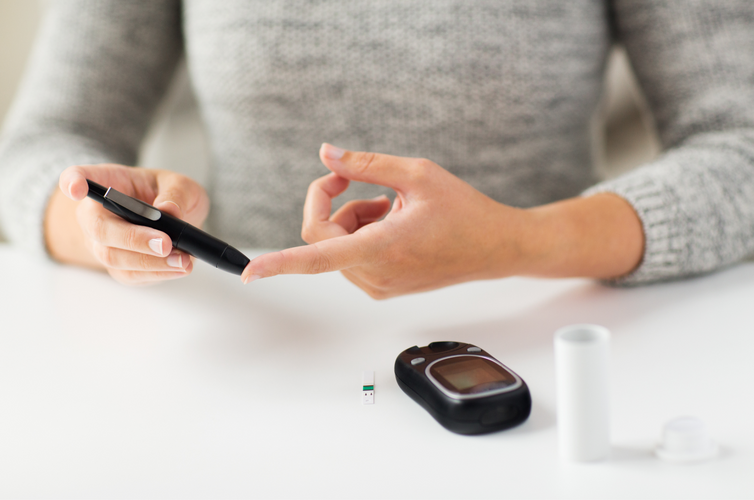Diabetes is a serious health condition that’s unfortunately prevalent worldwide – affecting over 30 million people in the US alone. According to the American Diabetes Association, another 7.2 million likely go undiagnosed, not aware they even have the disease.
For those who are unfamiliar with diabetes, there’s more than one form of it, with the three most common types being type 1 diabetes, type 2 diabetes, and gestational diabetes (which can happen during pregnancy).
Of the percentage of people who have diabetes 1 or 2, about 90-95% of sufferers have type 2 – while the remaining 1.25 million have type 1. In this article, we’ll discuss the difference between the two types, along with providing insight on how to prevent diabetes and manage the condition.
Difference Between Types of Diabetes
In order to understand more about diabetes, It's important to first understand the difference between types, since one may be preventable with healthier lifestyle habits, and the other is not…
Type 1 Diabetes
Starting with type 1 diabetes, this is an autoimmune condition where the immune system mistakenly attacks and destroys beta cells in the pancreas. Both genetic and environmental causes may play a role, but it remains unclear exactly what triggers such an immune system attack. Though this type of diabetes likely can’t be prevented, it can potentially be helped by healthier lifestyle habits.
Type 2 Diabetes
The second type of diabetes, type 2, is much more common, and the one that can most likely be prevented by eating a healthy diet, exercising, and maintaining a healthy lifestyle, (such as not smoking, drinking enough water, etc.). This version of diabetes begins when your body is either unable to use insulin efficiently or unable to produce enough insulin.
Since insulin is basically the “transporter” of glucose from blood to cells (to be used as energy), when insulin isn't working properly or the pancreas ins't producing enough of it, glucose will end up staying in the blood and building up – a dangerous condition that could lead to serious health problems if left unmanaged.
Gestational Diabetes
Gestational diabetes is very similar to type 2 diabetes, except it takes place during pregnancy. When this happens, the body can no longer use insulin like normal, and the pregnant mother can become "insulin resistant" – thus creating a buildup of glucose in the body and high blood sugar levels.
Luckily, pregnant women diagnosed with gestational diabetes can help manage the condition with healthy eating, exercising, and doctor prescribed medications. Most with the condition experience normal blood glucose levels again soon after delivery, however it's important to note that women who are diagnosed with gestational diabetes are at greater risk for developing type 2 diabetes later in life.
Diabetes Prevention: What Causes Diabetes?
If you’re a diabetic, there are different factors that result in type 1, 2, and gestational diabetes…
The Type 1 Diabetic
Aside from heredity, the cause of type 1 diabetes is largely unknown. This type of diabetes is an autoimmune disorder. Genetic predisposition to diabetes is possible with a family history of type 1 diabetics. Annually, 13,000 new type 1 diabetes cases are diagnosed in children and teens.
The Type 2 Diabetic
Food consumption and obesity has a direct connection to type 2 diabetes. According to research, the growing number of obese individuals heightens the number of type 2 diabetic diagnoses…
“Most patients with type 2 diabetes are obese, and the global epidemic of obesity largely explains the dramatic increase in the incidence and prevalence of type 2 diabetes over the past 20 years. Currently, over a third (34%) of U.S. adults are obese (defined as BMI >30 kg/m2), and over 11% of people aged ≥20 years have diabetes, a prevalence projected to increase to 21% by 2050.” [1]
However, not everyone who is obese becomes a diabetic. Ultimately, everyone’s body responds differently.
The Gestational Diabetic
While weight gain is natural for pregnant women, too much can cause problems. Excessive weight gain during pregnancy can lead to hypertension and gestational diabetes. However, one study found that women with gestational diabetes had another factor in common - they were already overweight or obese before pregnancy and had a family history of diabetes.
How to Prevent Diabetes Naturally
If at this point your wondering how to prevent diabetes (at least type 2 and gestational diabetes), putting the following healthy lifestyle practices into place can absolutely make a significant difference. Don’t let your health take a backseat… Especially if diabetes runs in your family, put healthier habits in place today to help prevent future problems.
In addition, keep in mind that if you already have diabetes or are pre-diabetic, starting to move from unhealthy lifestyle choices to ones that support long-term health and longevity are essential steps in preventing and managing diabetes.
Diabetes Prevention: 3 Vital Steps
1) Eat a healthy, balance diet

In regards to diabetes, preventing and managing the condition is all about keeping blood sugar levels in a healthy range and stable. However, when consuming a large amount of sugar and refined carbs, it can cause a blood sugar spike. Occasional sweets aren't going to have a major affect, but frequent consumption can cause elevated levels overtime, ultimately being a risk factor for the disease.
Along with reducing the added sugar and refined carbs in your diet, also aim to eat foods naturally lower in fat, as well as fresh, whole foods that are high in fiber - including fruits, vegetables, whole grains, beans/legumes and more.
2) Get Moving!
Next, studies show that working out regularly can help improve your body’s insulin response and function. Basically, it can increase insulin sensitivity – and higher insulin sensitivity helps your cells use blood glucose more effectively.
Low insulin sensitivity is also known as insulin resistance, which is when isn't functioning properly – which can lead to diabetes. Research shows that physical activity can also help reduce insulin resistance in overweight, obese and pre-diabetic people.
3) Hydrate
In line with healthier dietary choices, choosing water, or a healthy, sugar-free beverage instead of sugary drinks can absolutely help you get in shape and avoid diabetes. Sugar-sweetened beverages (even fruit juices) are one of the leading causes of the obesity epidemic right now, and as mentioned earlier, excess weight and diabetes go hand-in-hand.
Instead, try swapping sugar-sweetened beverages for options such as water, unsweetened tea, sparkling water and more!
Want more articles to help you eat clean and live a healthy lifestyle that can help prevent disease and future health problems? Check out more nutritionist-approved health articles on the 310 Blog, here!
Sources:
[1] https://www.ncbi.nlm.nih.gov/pmc/articles/PMC3206399/
[2] http://www.healthywomen.org/content/ask-expert/1449/avoiding-excessive-weight-gain-during-pregnancy
[3] https://www.ncbi.nlm.nih.gov/pubmed/17416786
[4 ]https://www.mayoclinic.org/diseases-conditions/type-2-diabetes/symptoms-causes/syc-20351193
[5] https://www.mayoclinic.org/diseases-conditions/gestational-diabetes/symptoms-causes/syc-20355339

















